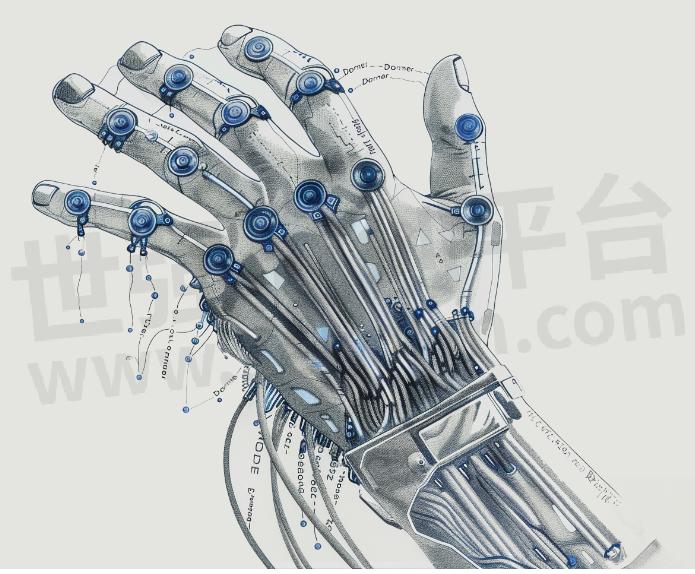Why Haptics? Unveiling the Benefits and Applications of Haptic Technology

Touch is arguably our most primal instinct. Research shows that the sense of touch is the first to awaken in a baby’s life, allowing them to perceive sensations like temperature, pressure and pain even in the womb. Upon their birth, it provides them with comfort amidst the new sights, sounds, and smells of the world.

This fundamental instinct continues to play a vital role throughout our lives, especially digital lives, providing comfort and connection in a world filled with many different experiences.
In an age where 8k visuals and HD surround sound reign supreme, the tactile dimension of digital media may seem overshadowed. However, far from being forgotten, it’s on the verge of a significant breakthrough. Projections indicate that by 2028, the haptics industry could be worth USD 5 billion. As more and more consumer devices start to become touch-enabled, the demand for haptics and haptic-based solutions is expected to increase significantly in the next five years.
What’s all the buzz around haptics? To fully understand its continuous growth and its key potential in the market, it’s important to understand its benefits. Below, we’ve outlined several compelling use cases and reasons to embrace haptics technology.
The Benefits of Haptic Technology
Enhanced User Experience
Haptic feedback can significantly improve user experience by offering a tactile dimension in a digital environment. Consider your smartphone keyboard—it generates tiny clicks every time you type a text message, echoing the feel of an old phone keyboard. Just this one little thing allows you a more immersive and intuitive human-computer interaction, resulting in heightened user engagement and satisfaction.
Improved Accessibility
For people with visual or auditory impairments, haptic technology can provide alternative ways to interact with digital devices. For example, a visually-impaired person can use haptic feedback to navigate a touchscreen device with ease. Additionally, in situations where visual or auditory attention is not ideal, such as in driving, haptic feedback in steering wheels and car seats can provide critical information about the driver’s blind spots without diverting their attention.
Increased safety and precision
In industries such as automotive or healthcare, haptic technology can increase efficiency by providing tactile feedback that helps reduce errors and enhance safety and precision. For example, haptic feedback in construction can alert workers to potential hazards. Similarly, in the medical field, it can provide surgeons with a more precise sense of touch during procedures.
Competitive Advantage
As haptic technology is still a relatively new field, businesses that incorporate it into their products can gain a competitive advantage and differentiate themselves from their competition. Some of the following ways adopting haptics technology can benefit businesses are:
Product Differentiation: By incorporating haptic technology, businesses can add a unique selling point to their products, making them stand out in the market. This can be especially beneficial in industries where products are often similar in design and functionality.
Consumer Appeal: As technology continues to evolve, consumers are always on the lookout for the latest and most innovative products. Haptic technology can meet this demand by providing a novel and engaging user experience.
Enhanced Brand Perception: Businesses that adopt haptic technology can position themselves as industry leaders and innovators. This can enhance their brand image and attract more customers.
Increased Customer Satisfaction: Haptic technology can improve the user experience, leading to increased customer satisfaction. Happy customers are more likely to become repeat customers and recommend the product to others, leading to increased sales and revenue.
Future-Proofing: With the haptics market projected to grow significantly in the coming years, businesses that incorporate haptic technology now can future-proof their products and stay ahead of the curve.
Customization Opportunities: Haptic technology offers a wide range of customization options, allowing businesses to tailor the user experience to meet their customers’ specific needs and preferences. This can lead to a more personalized and satisfying user experience.
Potential for New Revenue Streams: By incorporating haptic technology, businesses can explore new revenue streams, such as offering premium versions of their products with advanced haptic features or developing new haptic-based products or services.
The Applications of Haptic Technology
Now that we’ve covered the benefits of haptic technology, we can now shift our focus towards its practical applications and how this technology is being utilized across various sectors.
Gaming and Virtual Reality
Perhaps the most ubiquitous use-case of haptics technology is in the gaming and virtual reality sector. By utilizing haptic feedback in their products, developers are able to provide a more immersive experience, allowing gamers to feel the virtual world and thereby enhancing their overall gaming experience.
A study conducted by Sotiris Kirginas from the University of Athens showed that ten out of ten participants, that haptic digital games are more convincing and realistic than conventional digital games, while eight out of ten reported that haptic feedback makes the gaming experience more engaging.
Mobile Devices
The most common use case for haptic technology is mobile devices and wearables. Haptics can create tactile feedback for alarms and notifications, and also simulate the feeling of pressing a button, providing users with confirmation feedback.
A research paper authored by Stanford University’s Mitchell L. Gordon and Google’s Shumin Zhai for the 2019 CHI Conference tested the effects of touchscreen haptic augmentation on smartphones. In the study, they found that users were more confident and more engaged with haptic feedback in their smartphones while doing their tapping, drag and drop, and path-following tasks. Furthermore, they found that there was more than a fifty percent accuracy gain in situations where the visual cues are obstructed by the finger, but can be easily detected haptically.
Wearables
In wearable technology, haptic feedback can be used to provide discreet notifications, guide users in fitness activities, or even help visually impaired individuals navigate their surroundings. It can also be used to create meditation guides and supplement relaxation techniques. User interaction research has also demonstrated that haptic feedback significantly improves user experience and engagement with wearable technology.
Education and Training
Haptic technology can also be used to create engaging learning experiences. It can simulate real-world scenarios, making it an ideal tool in fields like medicine, aviation, and engineering, where practical experience is crucial. Using haptic devices in education is also said to convert passive learning into active learning, offering a physical interaction between students and the topic they’re tasked to comprehend.
Automotives
In the automotive industry, haptic technology can be used to increase safety and improve the driving experience. Haptic feedback in steering wheels or seats can alert drivers to potential hazards or provide information about the vehicle’s performance. A study conducted at Tshwane University of Technology found that haptic feedback systems enhanced driving performance, lowered the driver’s response time, and reduced the driver’s mental workload
Haptic technology is not just about adding a sense of touch to our digital world, but also about enhancing user experiences, making technology more accessible, and allowing more streamlined and intuitive human-computer interactions.
For businesses, integrating haptic technology into products can provide a unique edge and open up new market opportunities.
- +1 Like
- Add to Favorites
Recommend
- Understanding Haptics: A Journey through the History and Evolution of Haptic Technology
- The Power of Haptics: Elevating Wellness to the Next Level
- Haptic Motors Clustered Haptic Arrays by TITAN Haptics Clusters Unlock New Possibilities
- What is Haptics? Perspectives from Top Sources
- Haptics in XR, Apple’s Hand Tracking and DIY Haptics Peripherals
- From Sci-Fi to Sitcoms, Six Media References to Haptics
- Steering the Future: The Role of Haptics in Automobiles
- The Art and Science of Haptics Integration
This document is provided by Sekorm Platform for VIP exclusive service. The copyright is owned by Sekorm. Without authorization, any medias, websites or individual are not allowed to reprint. When authorizing the reprint, the link of www.sekorm.com must be indicated.






























































































































































































































































































































































































































































































































































































































































































































































































































































































